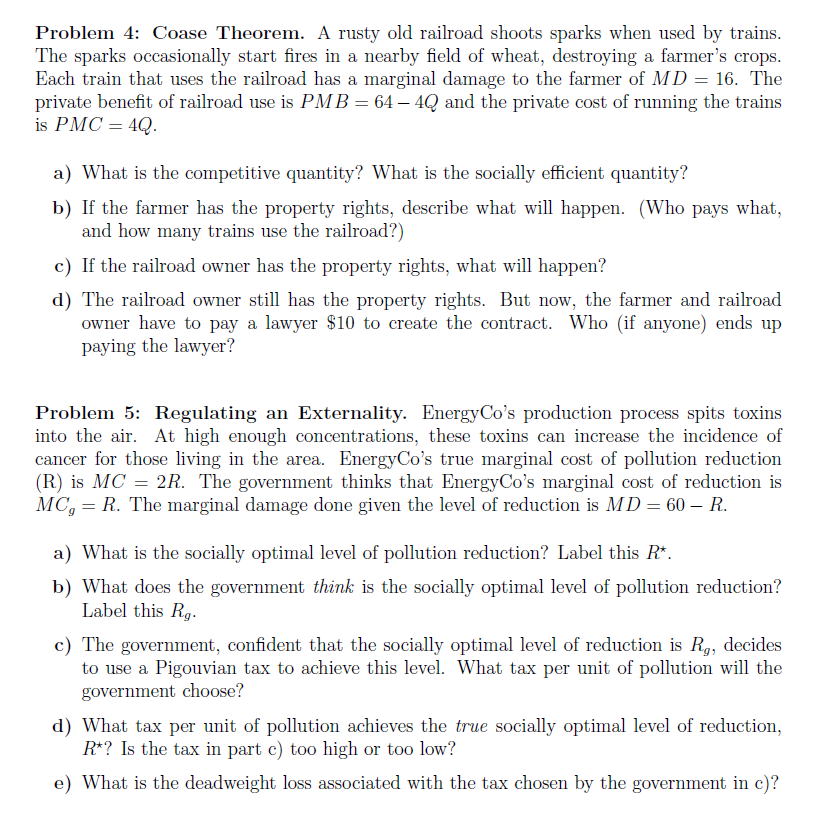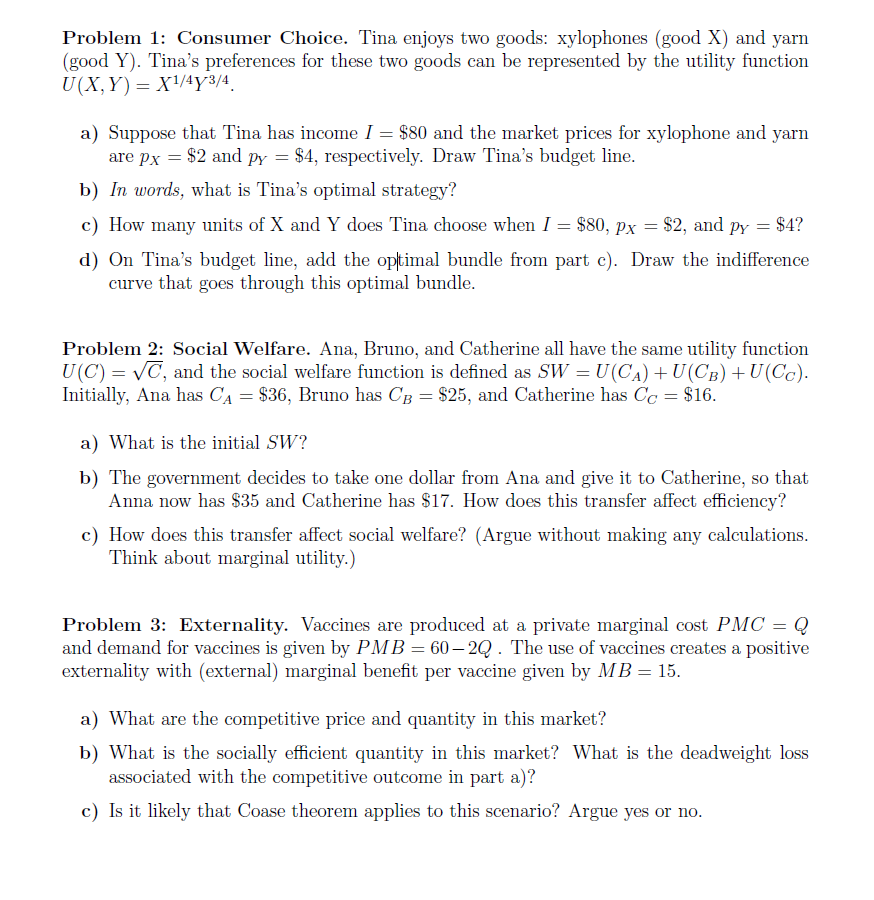Economics of Public Expenditures
Problem 4: Coase Theorem. A rusty old railroad shoots sparks when used by trains. The sparks occasionally start res in a nearby eld of wheat, destroying a farmer's crops. Each train that uses the railroad has a marginal damage to the farmer of MD 2 16. The private benet of railroad use is PMB = 64 4112 and the private cost of running the trains is PMC = 4Q. a} What is the competitive quantity? What is the socially eicient quantity? b} If the farmer has the property rights, describe what will happen. [Who pays what, and how many trains use the railroad?) c} If the railroad owner has the property rights, what will happen? d} The railroad owner still has the property rights. But now, the farmer and railroad owner have to pay a lawyer $10 to create the contract. Who [if anyone) ends up paying the lawyer? Problem 5: Regulating an Externality. EnergyCo's production process spits toxins into the air. At high enough concentrations, these toxins can increase the incidence of cancer for those living in the area. EnergyCo's true marginal cost of pollution reduction (R) is MC 2 2R. The government thinks that EnergyCo's marginal cost of reduction is M0,, = R. The marginal damage done given the level of reduction is MD 2 6'3 R. a} What is the socially optimal level of pollution reduction? Label this R". b} What does the government think is the socially optimal level of pollution reduction? Label this Ry. c} The government, condent that the socially optimal level of reduction is R9, decides to use a Pigouvian tax to achieve this level. What tax per unit of pollution will the government choose? d} What tax per unit of pollution achieves the true socially optimal level of reduction, R\"? Is the tax in part c) too high or too low? e} What is the deadweight loss associated with the tax chosen by the government in c)? Problem 1: Consumer Choice. Tina enjoys two goods: xylophones (good X) and yarn (good Y). Tina's preferences for these two goods can be represented by the utility function U( X, Y ) = X1/4y3/4 a) Suppose that Tina has income / = $80 and the market prices for xylophone and yarn are px = $2 and py = $4, respectively. Draw Tina's budget line. b) In words, what is Tina's optimal strategy? c) How many units of X and Y does Tina choose when I = $80, px = $2, and py = $4? d) On Tina's budget line, add the optimal bundle from part c). Draw the indifference curve that goes through this optimal bundle. Problem 2: Social Welfare. Ana, Bruno, and Catherine all have the same utility function U(C) = VC, and the social welfare function is defined as SW = U(CA) + U(CB) + U(Cc). Initially, Ana has CA = $36, Bruno has CB = $25, and Catherine has Co = $16. a) What is the initial SW? b) The government decides to take one dollar from Ana and give it to Catherine, so that Anna now has $35 and Catherine has $17. How does this transfer affect efficiency? c) How does this transfer affect social welfare? (Argue without making any calculations. Think about marginal utility.) Problem 3: Externality. Vaccines are produced at a private marginal cost PMC = Q and demand for vaccines is given by PMB = 60-2Q . The use of vaccines creates a positive externality with (external) marginal benefit per vaccine given by MB = 15. a) What are the competitive price and quantity in this market? b) What is the socially efficient quantity in this market? What is the deadweight loss associated with the competitive outcome in part a)? c) Is it likely that Coase theorem applies to this scenario? Argue yes or no








